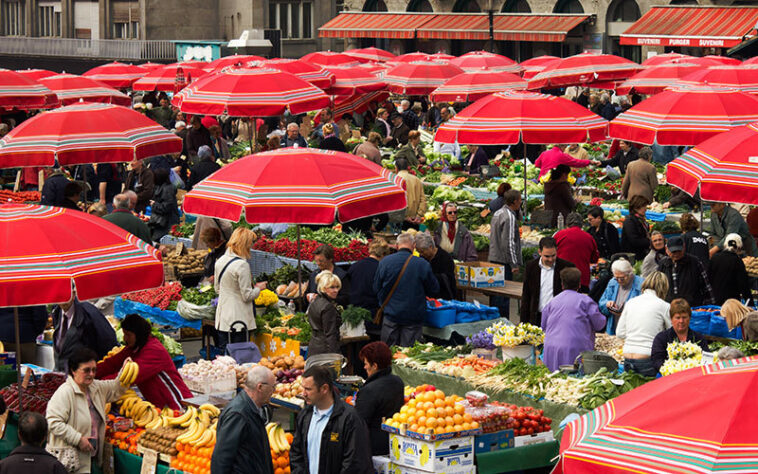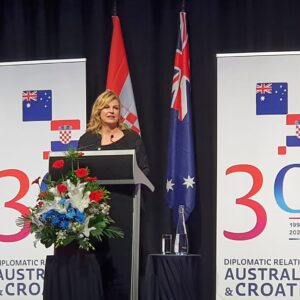Croatian residents and companies and organisations have faced a rude shock when recently their new gas/energy bills arrived with sharp and unexpected spikes compared to the previous ones, many expressing absolute inability to pay the new energy costs with the government finding itself in the position of having to subsidise some organisations so they could survive their energy bills. It has all been put down to some generalised energy crisis in EU and the world that is sure to cause price increases in all goods and services. Prime Minister Andrej Plenkovic noted during the past month that vulnerable energy consumers, about 91,000 of them, are currently receiving vouchers of EUR 27 each to pay electricity bills.
The program will be expanded to 5,700 beneficiaries of the national compensation for the elderly. Also, a voucher for gas will be introduced, and the amount doubled to EUR 54. A special one-time fee is envisaged for 721,000 pensioners with pensions lower than EUR 531, which will require a total payment of EUR 62 million. Not much help when one hears that energy bills have risen by double or triple amount from previous ones!
Prime Minister Andrej Plenkovic has also during the past month presented a plan for households, businesses, and farmers that would mitigate the rise in prices and pointed out that without the package the electricity bills would rise by 23 percent from April 1, compared to 79 percent for gas. The measures will become operational on April 1 and will be valid until March 31, 2023. Plenkovic pointed to the wave of rising prices in Europe caused by the global energy crisis as the main reason for the adoption of the package. Still, the rise of energy costs in Croatia appears much higher than in other countries, especially the West. He did not refer to any possible correlation between prices increases and Croatia’s transitioning into the Eurozone, that is, swapping its kuna currency with the euro in 2023!
According to the government’s plan the increase of electricity costs will be limited to lower the expected price increase. Goods and Services TAX (PDV) on natural gas will be reduced from 23 percent to 5 percent and a subsidy of 1.3-euro cents per kWh will be introduced. The Ministry of Economy will reimburse power suppliers from April 1 until March 31, 2023. There will be PDV tax reduction on many food items or products. Micro, small, and medium entrepreneurs with an average annual consumption of up to 10 GWh are eligible for subsidies. The amount of aid is 2-euro cents. It will be paid through vouchers.
General price rises have been known to occur in countries of the European Union as they approached admission into the Eurozone and the introduction of euro as their official currency. Croatia is set to introduce the euro in 2023 and while the current astronomic rises in energy prices are said to be associated with world energy crisis the increases in all prices may indeed be at least partially due to possible fallout from exchange rate fluctuations between the kuna and the euro; to achieve a softer fall of purchase power so to speak once entering the euro monetary climate.
For Croatia to meet its goal to be admitted into Eurozone in January 2023, it needs a positive assessment by the European Commission in spring 2022 and a subsequent decision by the EU Council in summer 2022.
The Croatian National Bank has been optimistic that Croatia, whose economy relies largely on tourism and services, will meet the EU’s criteria to join. The country relies more than any other EU state on tourists, who generate a fifth of gross domestic product and find holidaying much easier when they needn’t grapple with exchange rates. Meanwhile, most private and corporate bank deposits are held in euros, along with more than two-thirds of debt totalling about 520 billion kuna (US$78 billion). Eurozone membership would lower interest rates, improve credit ratings and make Croatia more attractive to investors, according to central bank Governor Boris Vujcic last month.
Adopting the euro would reportedly formalise a large piece of economic activity that’s already carried out using the common currency — from apartment and car sales to short-term rentals for vacationers. It would trim foreign-exchange costs outside tourism to the tune of about 1.2 billion kuna a year, according to the central bank.
Croatia would gain access to European Central Bank liquidity and potential bailout financing from the European Stability Mechanism during periods of crisis.
Inflation is the biggest uncertainty. Europe’s spike in energy costs alongside the Croatian economy’s rebound in 2021 have sent consumer prices surging. Inflation is set to come in at 3.5% in 2022, but what counts is how Croatia stacks up against a one-year average of the three euro-area states with the lowest rates. That calculation will be made once data for April are in.
Due to the recent surge in inflation, Croatia might breach the price stability criterion. However, as the price rises are also observable in the eurozone, the Croatian National Bank argued that Croatia should be considered as fulfilling the criterion, nevertheless.
Croatia’s Central Bureau of Statistics (CBS) released last Thursday Croatian inflation data for the month of January 2022, which went unnoticed due to the horrendous Russian attack on Ukraine, although prices did continue to rise significantly. In January 2022, prices were 5.7 percent higher than in the same month back in 2021.
There are solid indicators that the key cause of rising prices across Croatia is now not only the global energy prices but also transport prices (growth in January +10.8 percent), food and non-alcoholic beverages (+9.4 percent), alcoholic beverages and tobacco (+6.2 percent), furniture, household equipment and household maintenance costs (+5.0 percent) and at restaurants and hotels (+ 4.7 percent).
Whether global energy crisis or not, most Croatians believe the introduction of the euro will have positive consequences for the country, according to a 2021 Eurobarometer poll. However, 70% believe it could and will lead to price increases. Perhaps this is where much of price increases come from during this year that leads to Eurozone for Croatia. And, by the way, the past year has seen about 13,000 newly poor in Croatia as standard of living continues to drop for many and indications are that multitudes in Croatia will step into the Eurozone with their feet far below the poverty line. Prices growth usually do affect the poorest and Croatia is one of the poorest countries in the EU. Bumping up economic activity, apart from tourism, has been and remains the biggest stumbling block for Croatia, euro, or no euro. Work and employment culture and practices are still heavily founded on corrupt nepotism and largely irresponsible work habits inherited from communist Yugoslavia, where accountability had been the weak point undermining economic and living standard progress. Regretfully.




